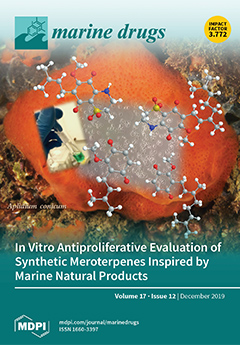As filter-feeding animals mainly ingesting microalgae, bivalves could accumulate paralytic shellfish toxins (PSTs) produced by harmful algae through diet. To protect themselves from the toxic effects of PSTs, especially the concomitant oxidative damage, the production of superoxide dismutase (SOD), which is the only eukaryotic metalloenzyme capable of detoxifying superoxide, may assist with toxin tolerance in bivalves. To better understand this process, in the present study, we performed the first systematic analysis of
SOD genes in bivalve
Chlamys farreri, an important aquaculture species in China. A total of six
Cu/Zn-SODs (
SOD1-6) and two
Mn-SODs (
SOD7,
SOD8) were identified in
C. farreri, with gene expansion being revealed in
Cu/Zn-SODs. In scallops exposed to two different PSTs-producing dinoflagellates,
Alexandrium minutum and
A. catenella, expression regulation of
SOD genes was analyzed in the top ranked toxin-rich organs, the hepatopancreas and the kidney. In hepatopancreas, which mainly accumulates the incoming PSTs, all of the six
Cu/Zn-SODs showed significant alterations after
A. minutum exposure, with
SOD1,
2,
3,
5, and
6 being up-regulated, and
SOD4 being down-regulated, while no significant change was detected in
Mn-SODs. After
A. catenella exposure, up-regulation was observed in
SOD2,
4,
6, and
8, and
SOD7 was down-regulated. In the kidney, where PSTs transformation occurs,
SOD4,
5,
6, and
8 were up-regulated, and
SOD7 was down-regulated in response to
A. minutum feeding. After
A. catenella exposure, all the
Cu/Zn-SODs except
SOD1 were up-regulated, and
SOD7 was down-regulated in kidney. Overall, in scallops after ingesting different toxic algae,
SOD up-regulation mainly occurred in the expanded
Cu/Zn-SOD group, and
SOD6 was the only member being up-regulated in both toxic organs, which also showed the highest fold change among all the
SODs, implying the importance of
SOD6 in protecting scallops from the stress of PSTs. Our results suggest the diverse function of scallop
SODs in response to the PST-producing algae challenge, and the expansion of
Cu/Zn-SODs might be implicated in the adaptive evolution of scallops or bivalves with respect to antioxidant defense against the ingested toxic algae.
Full article






